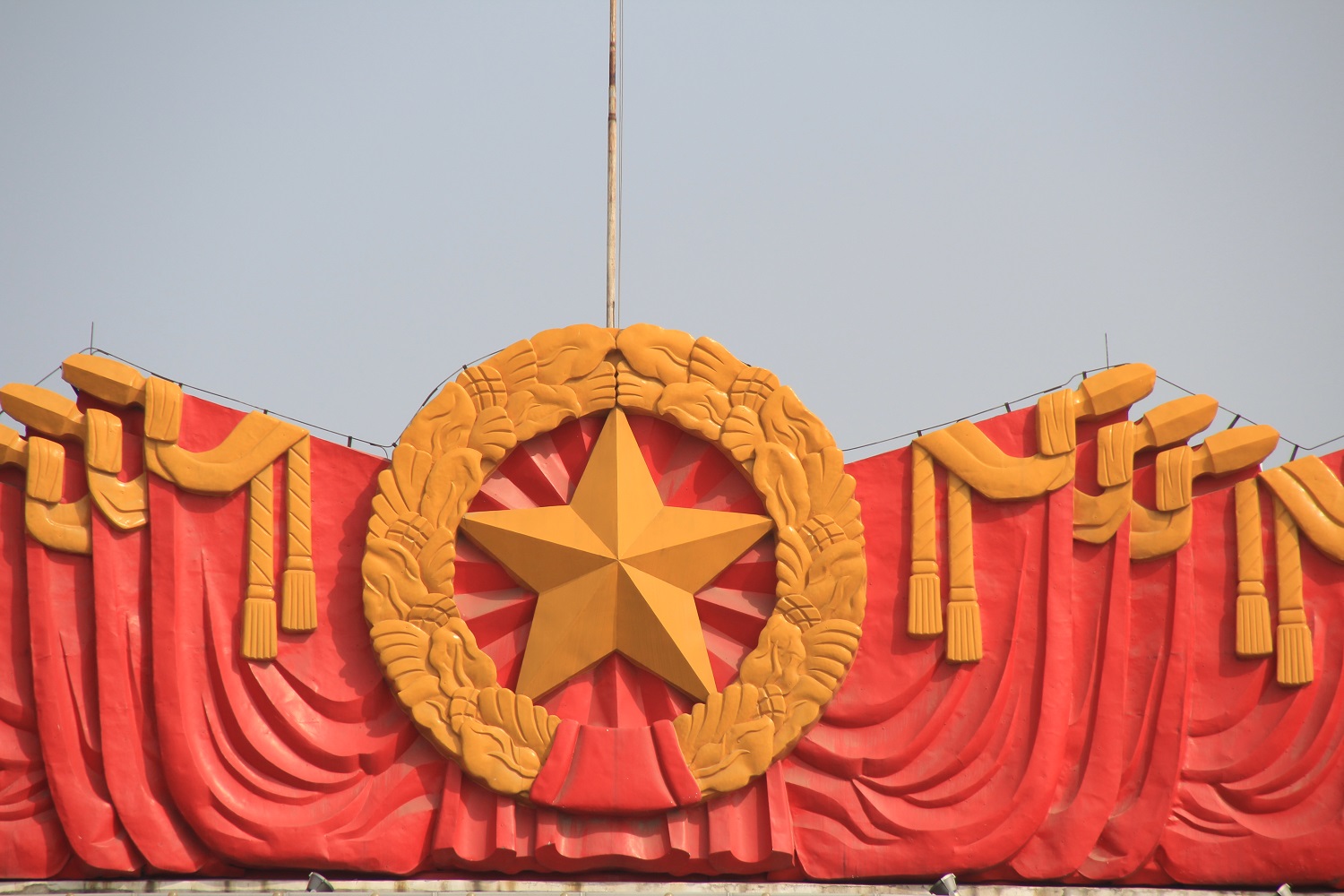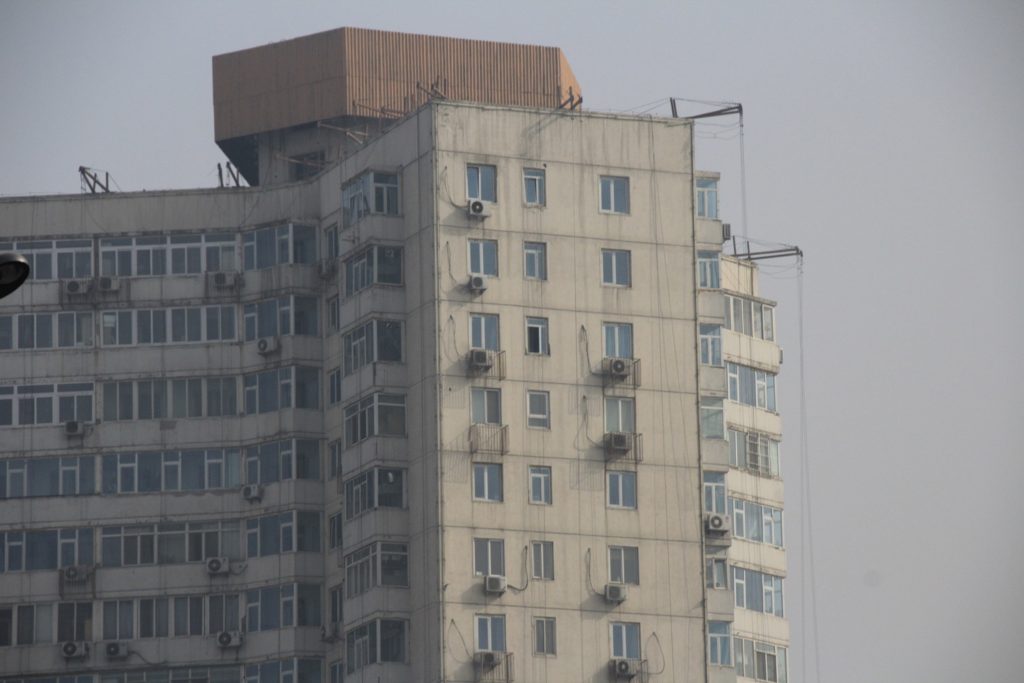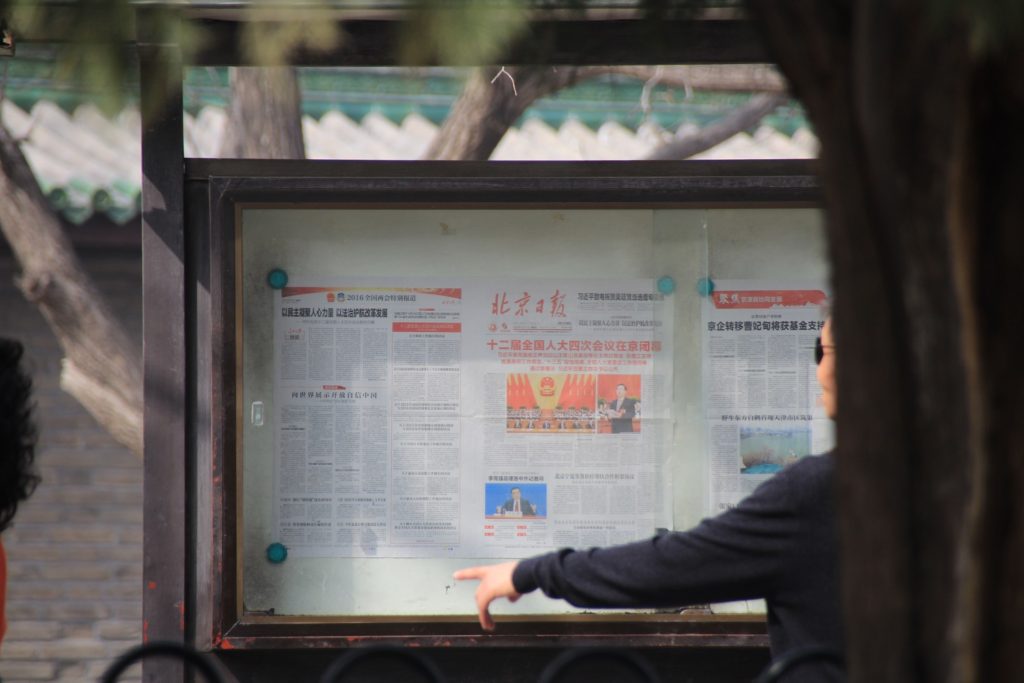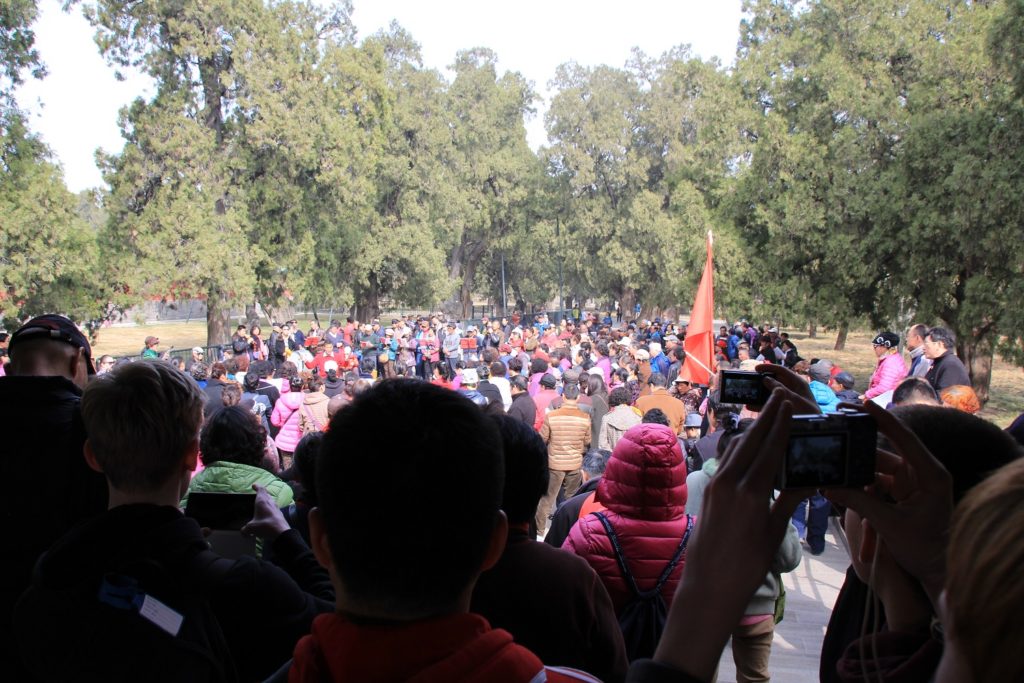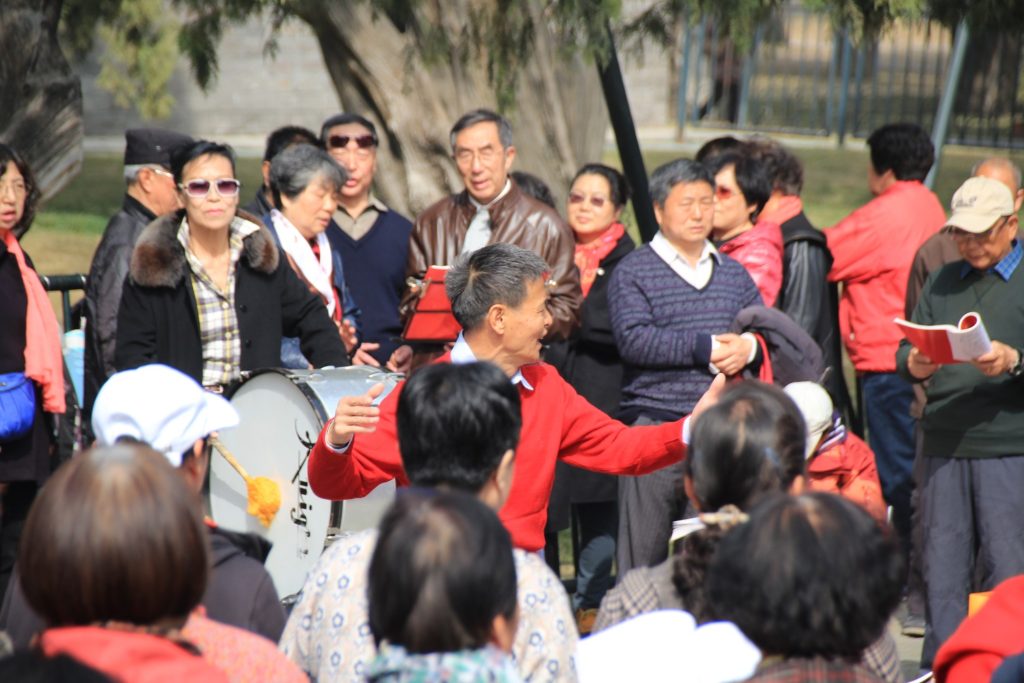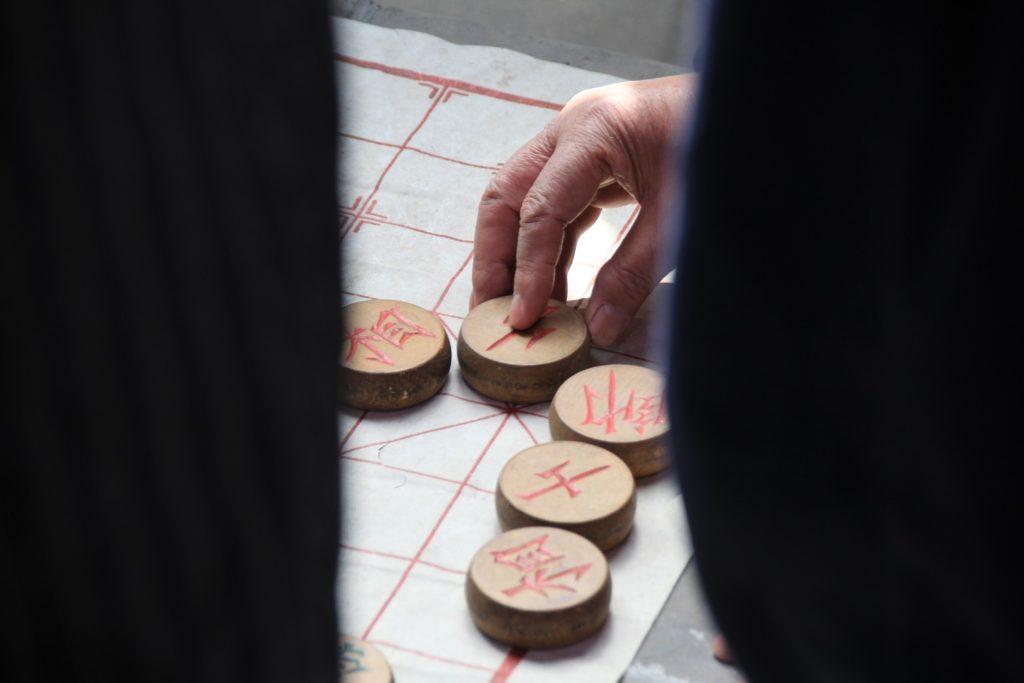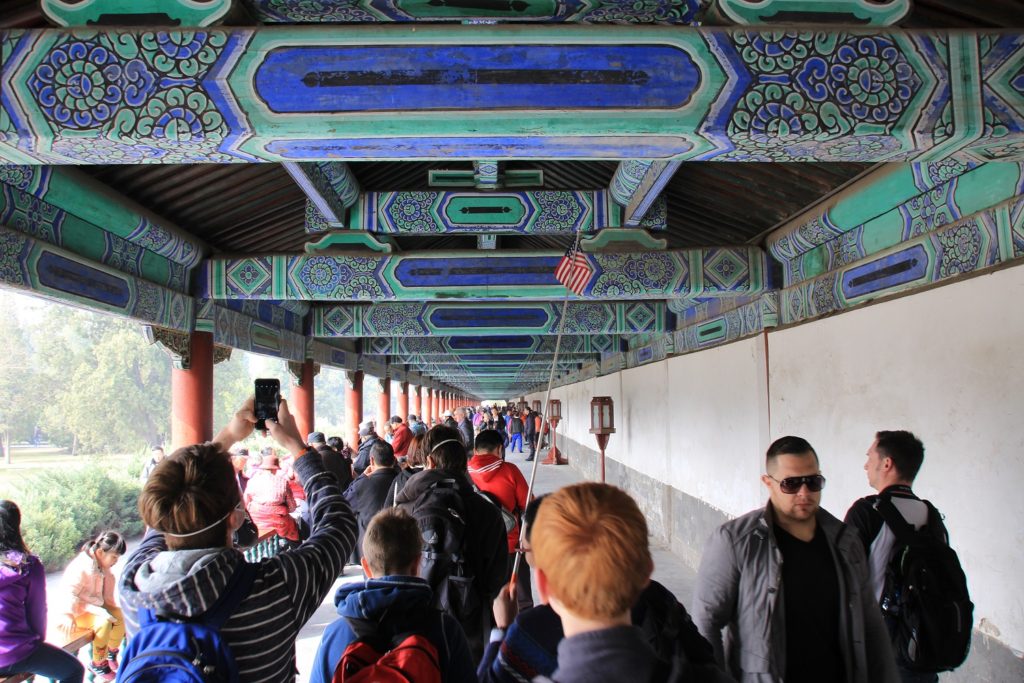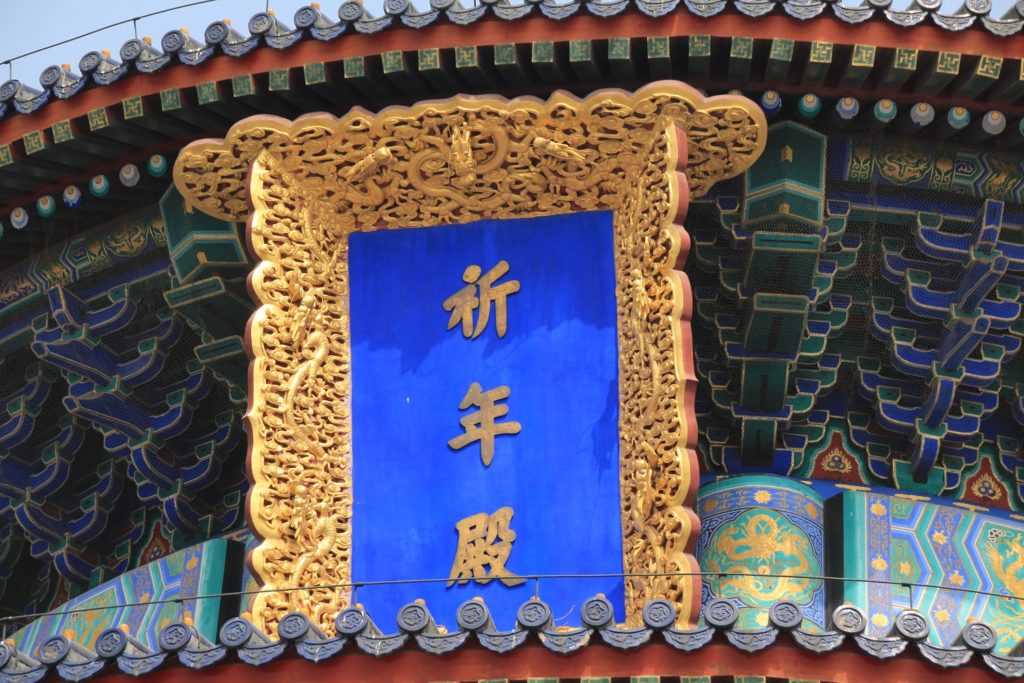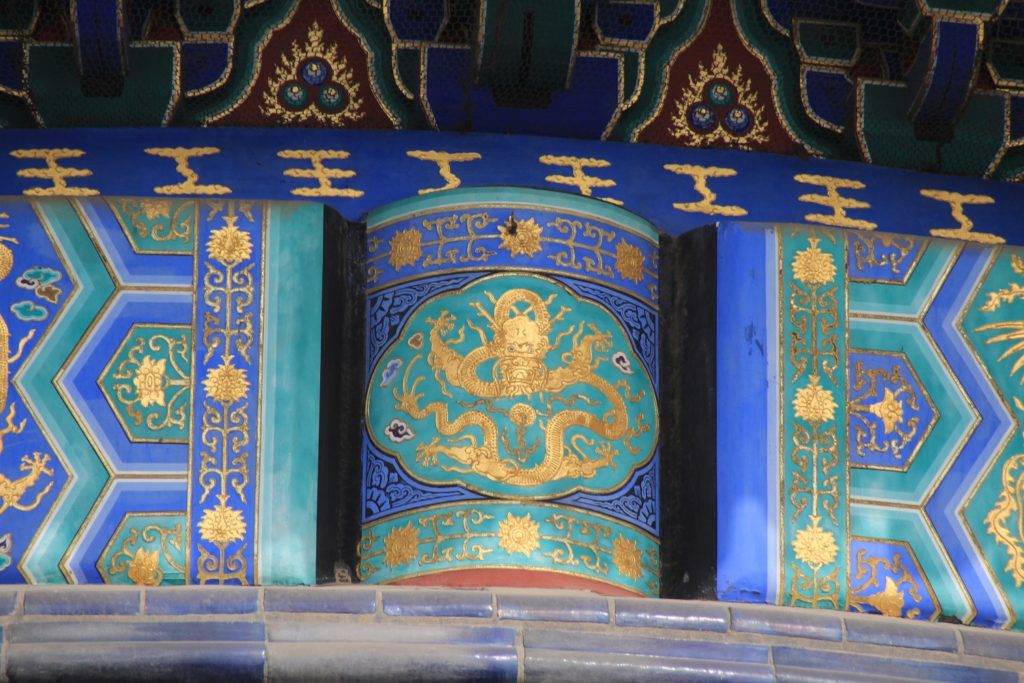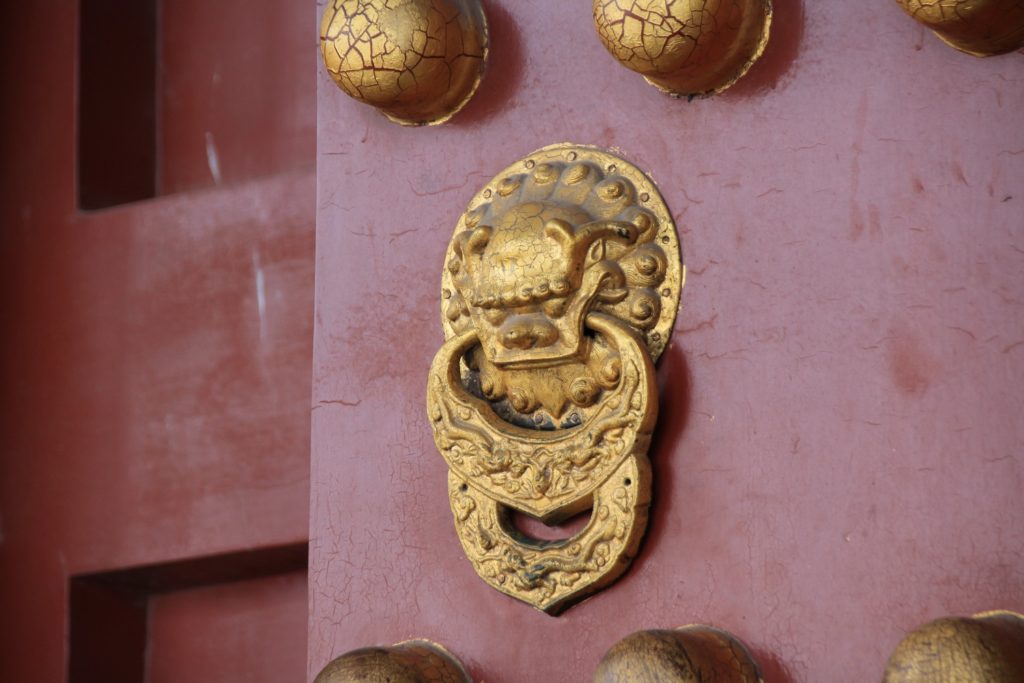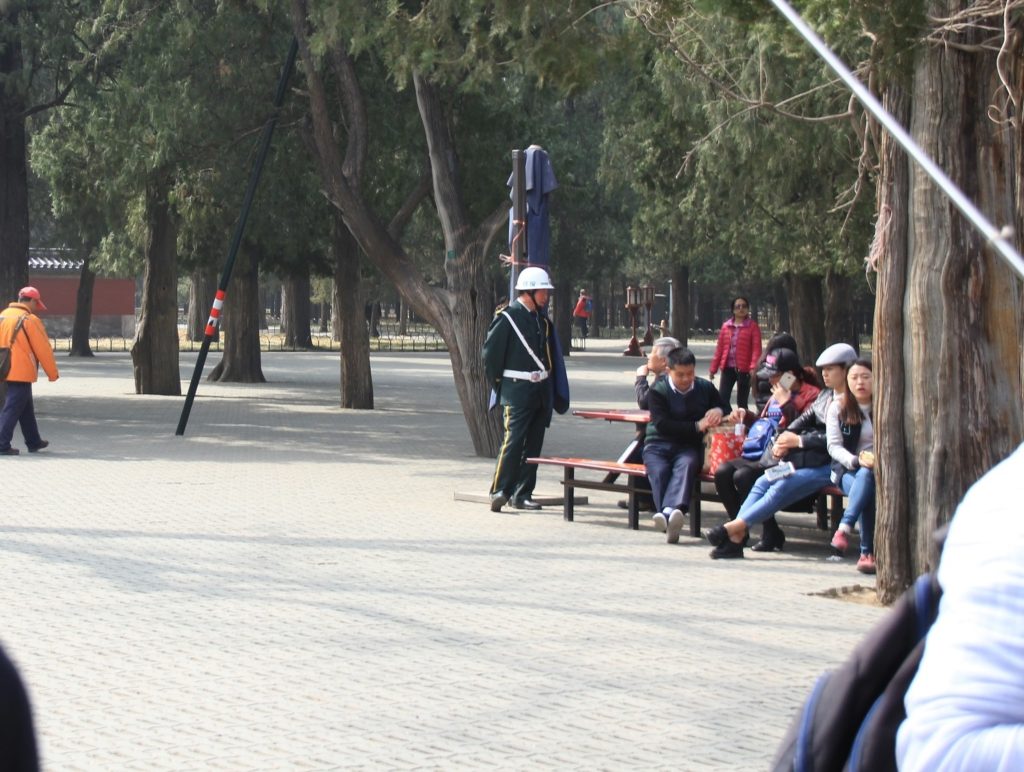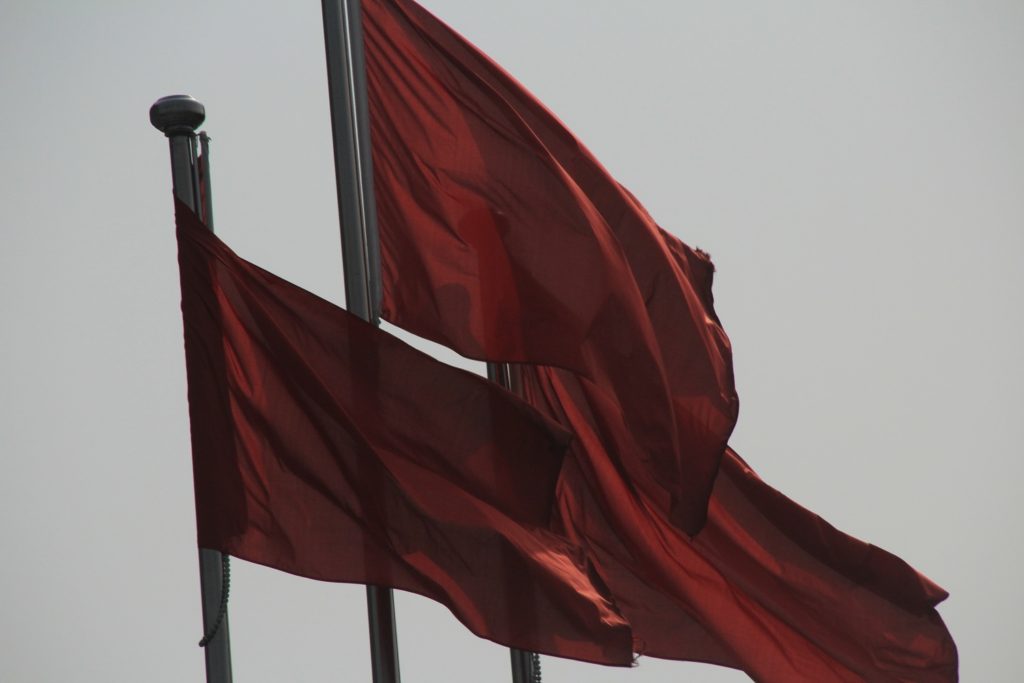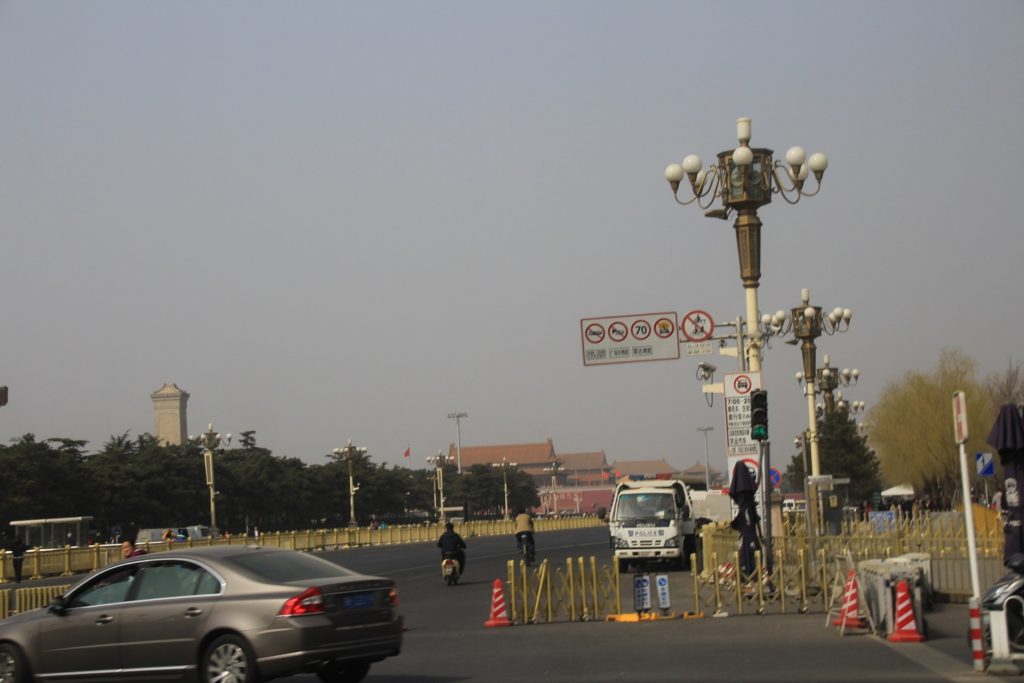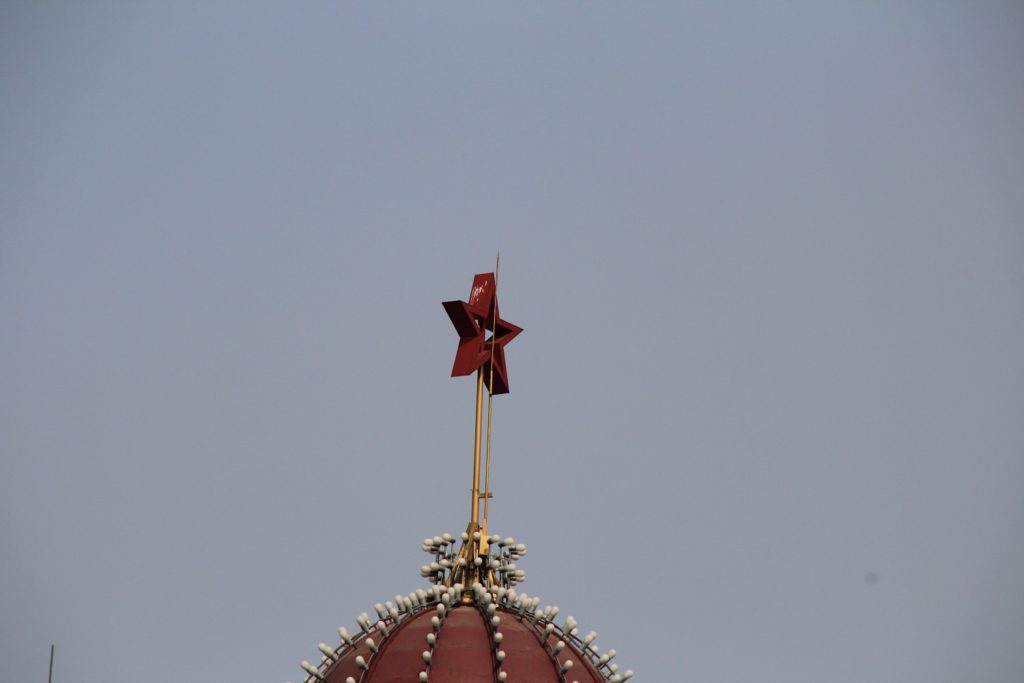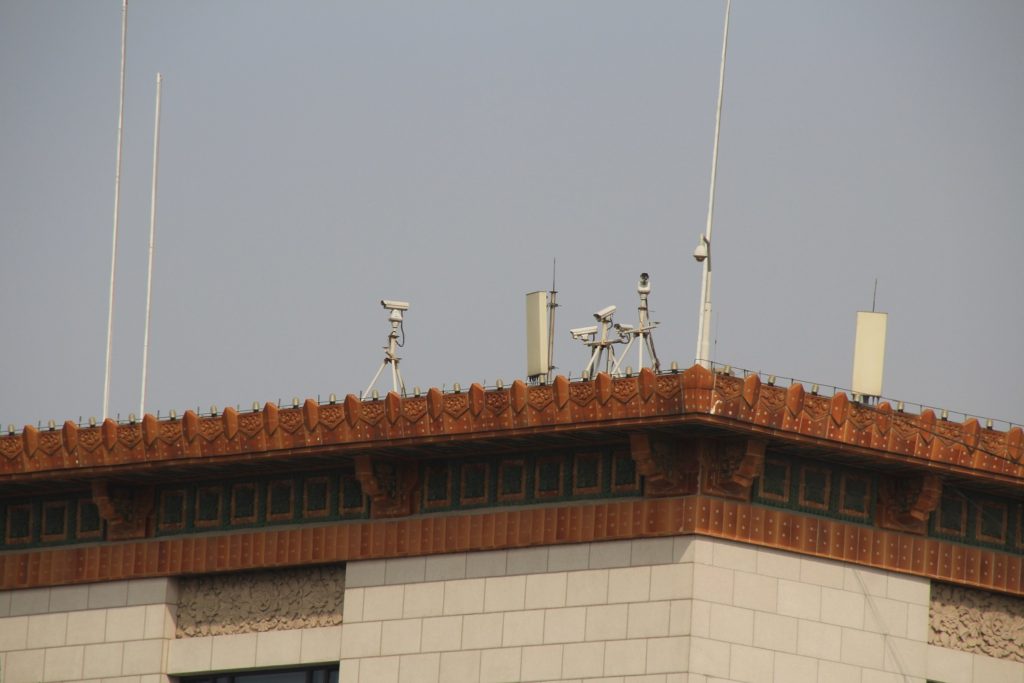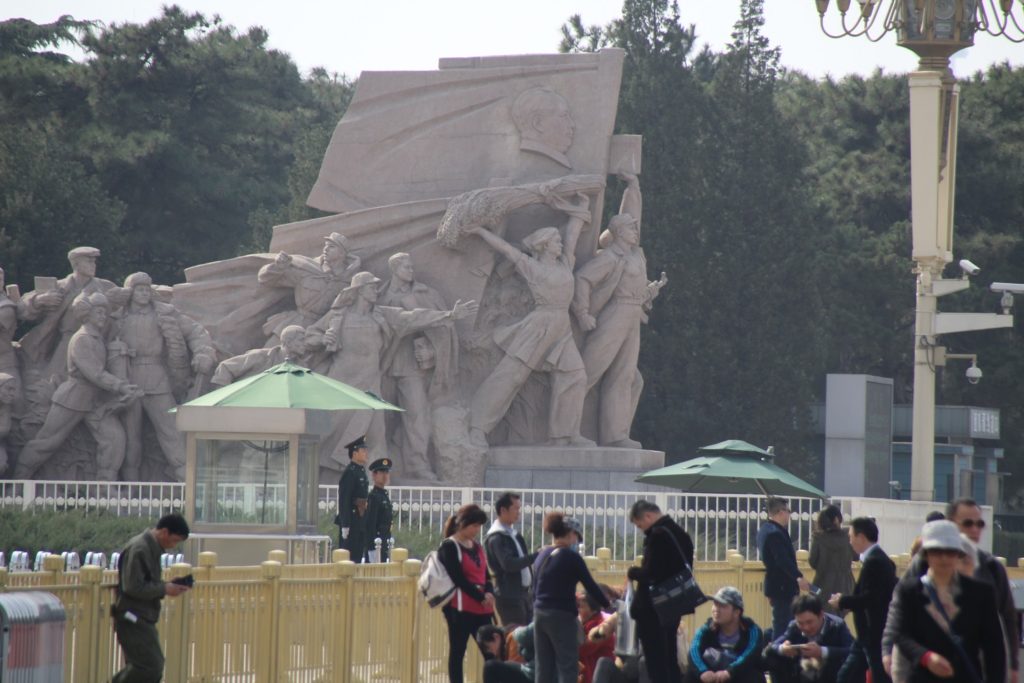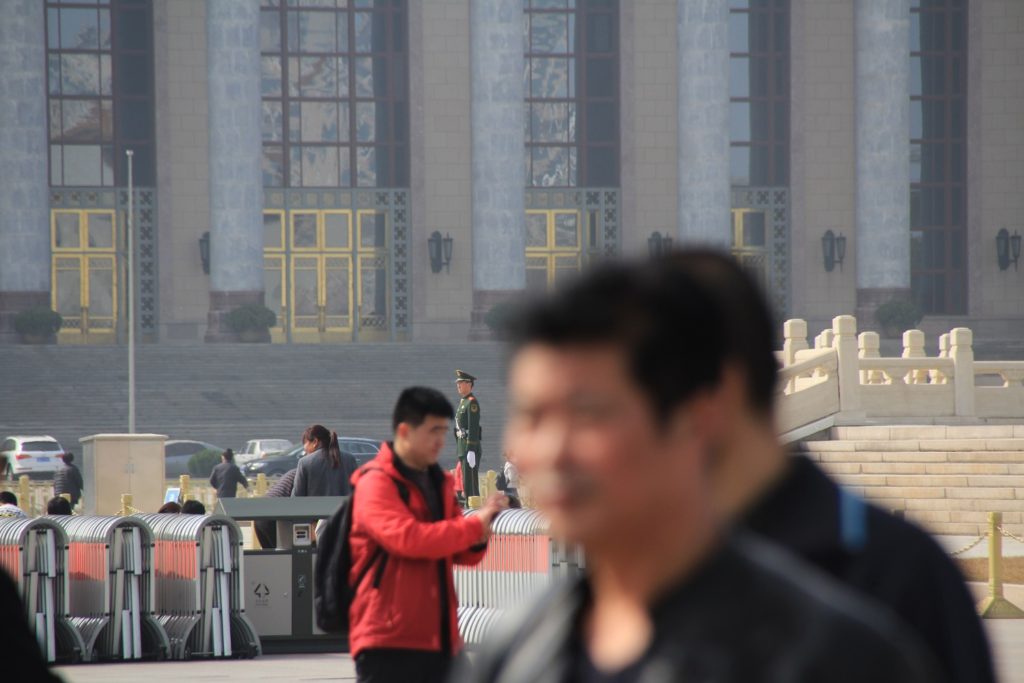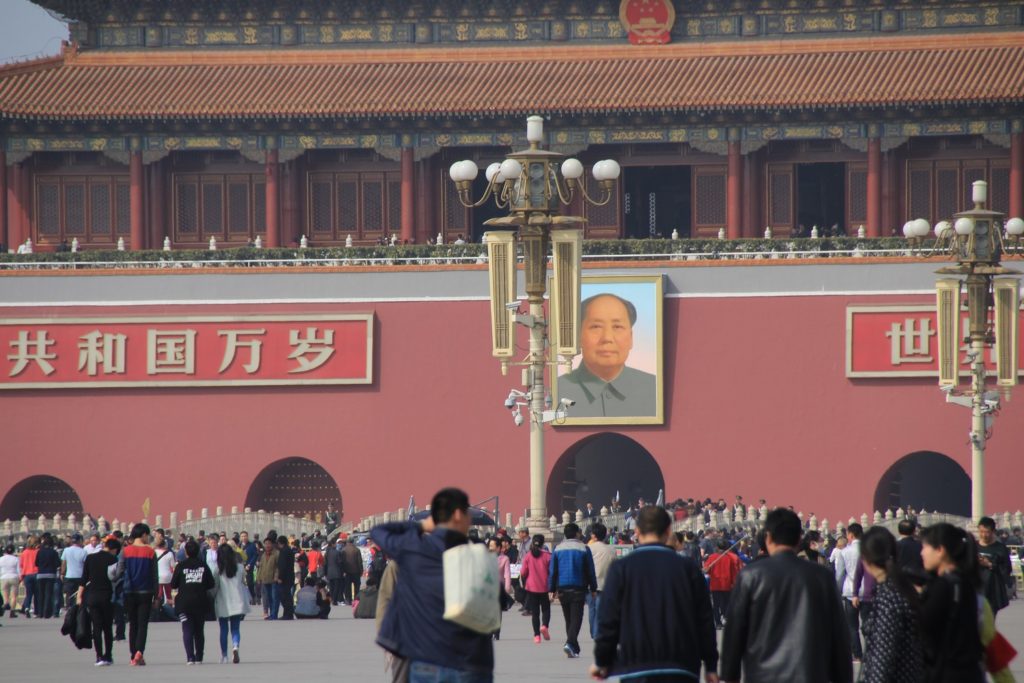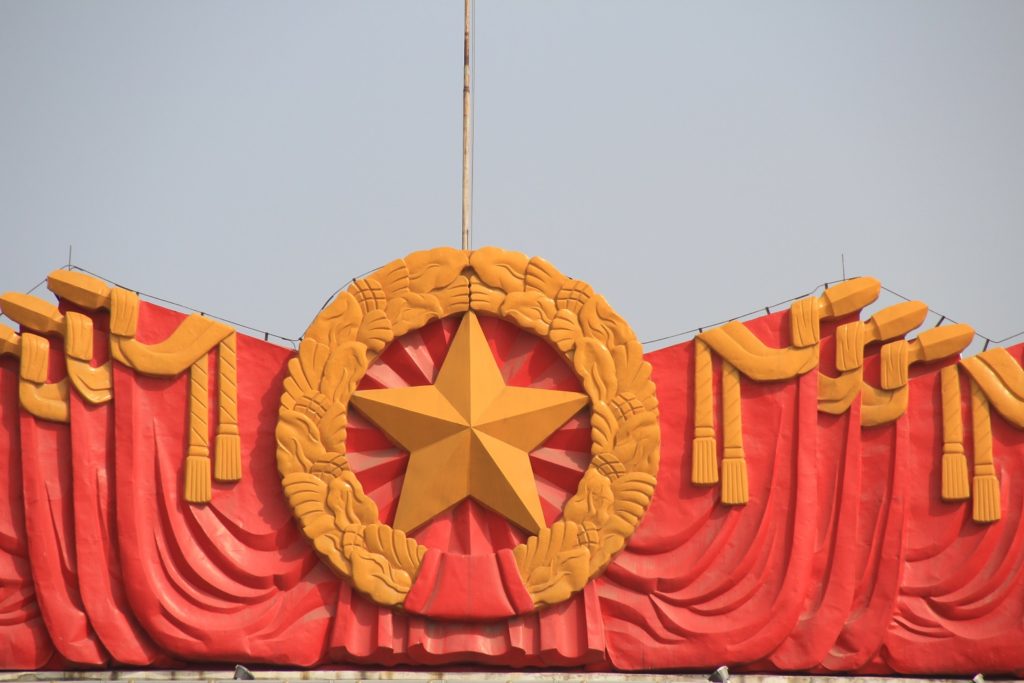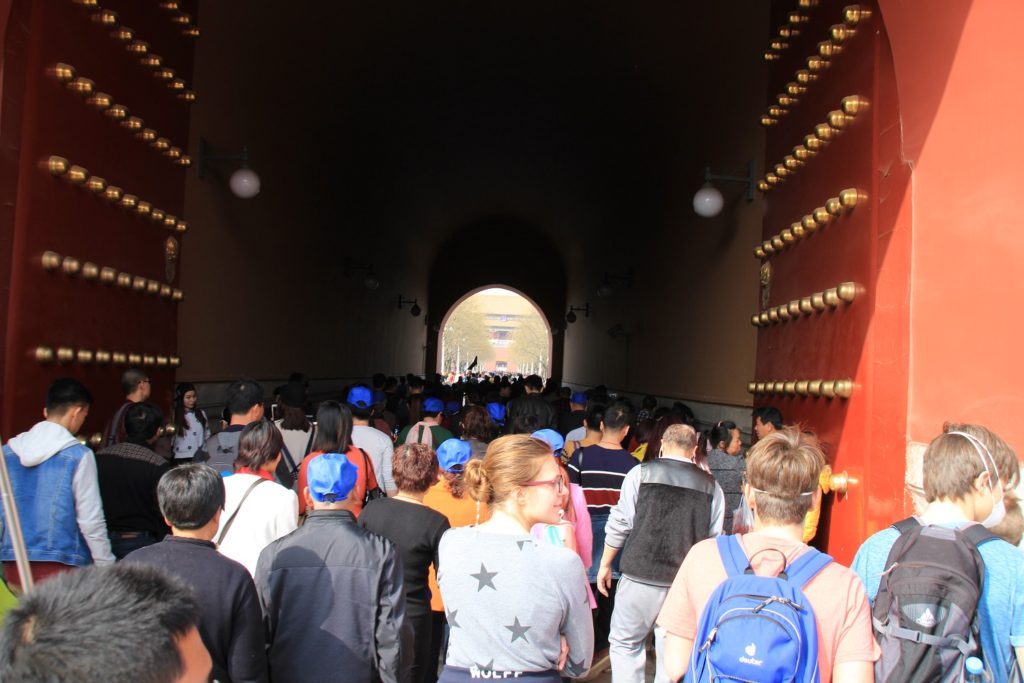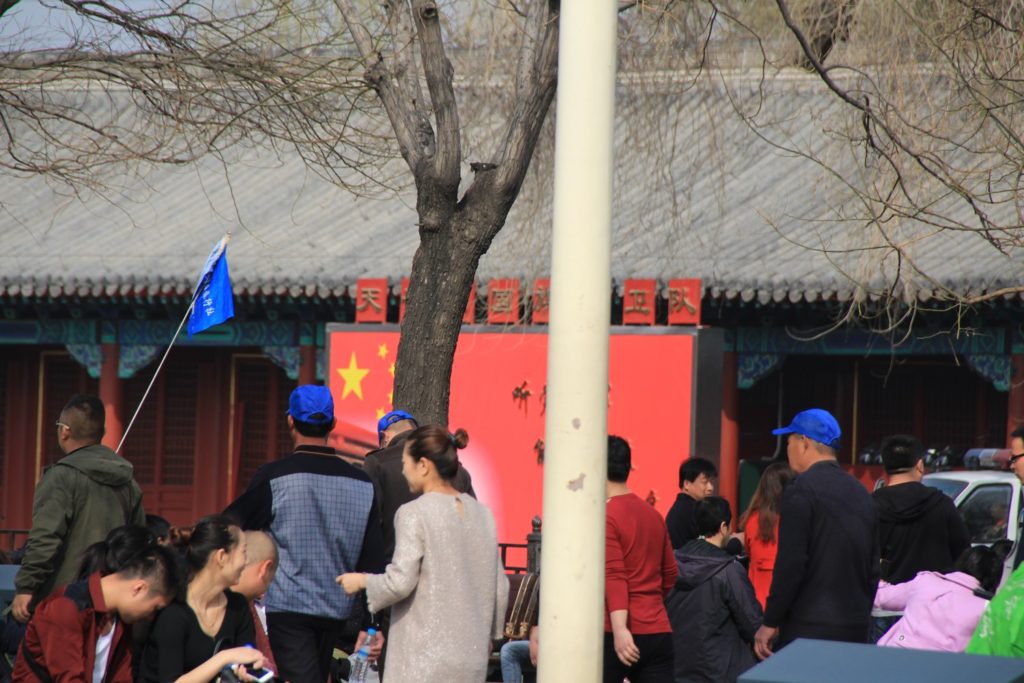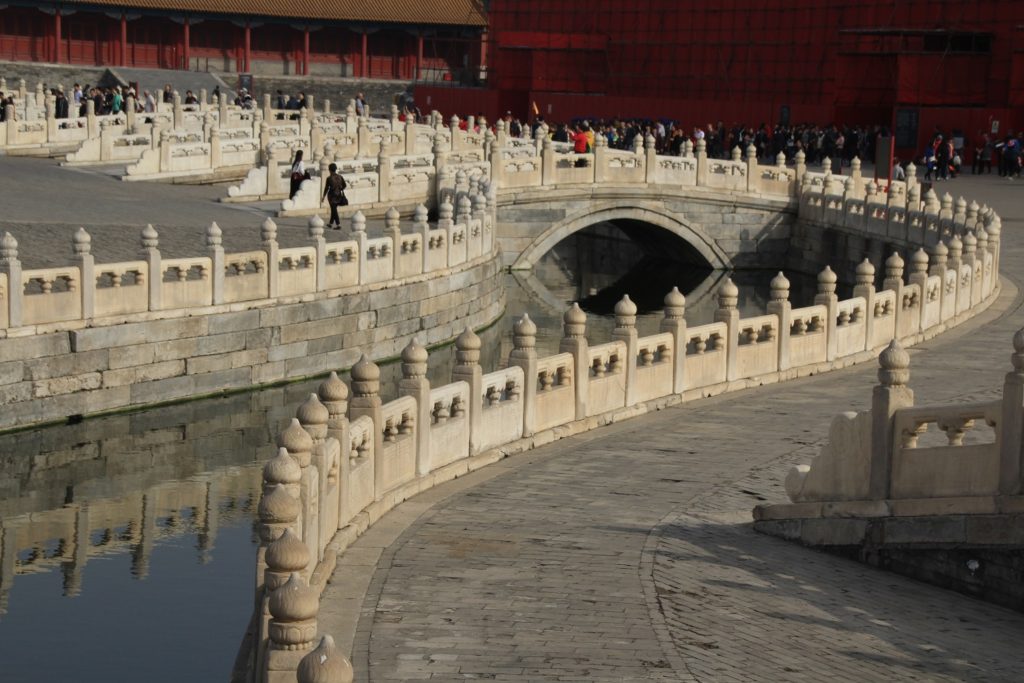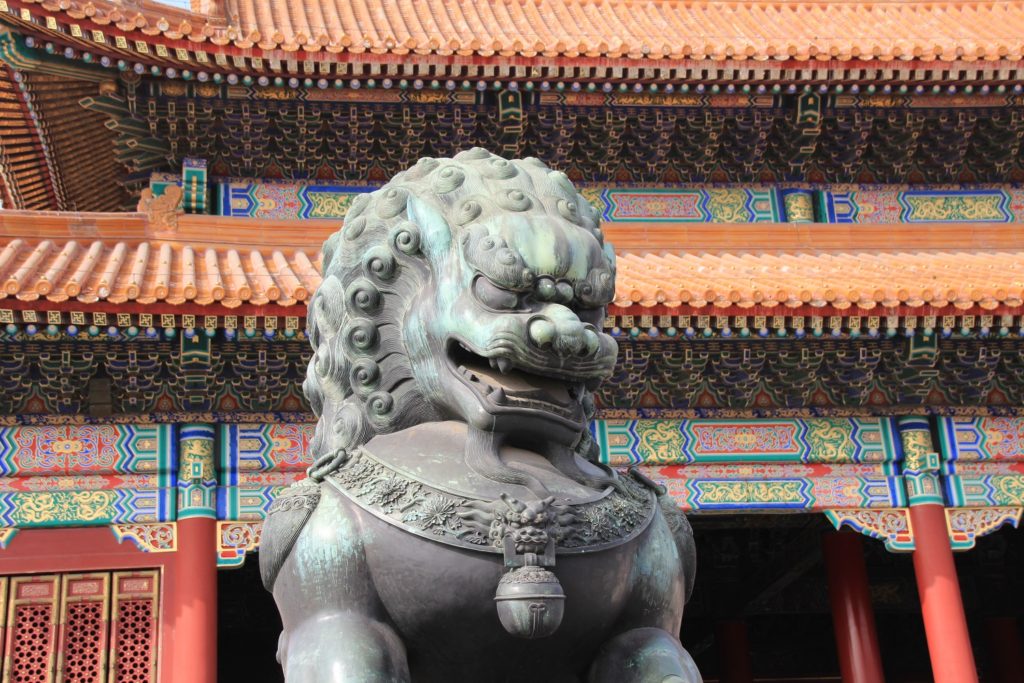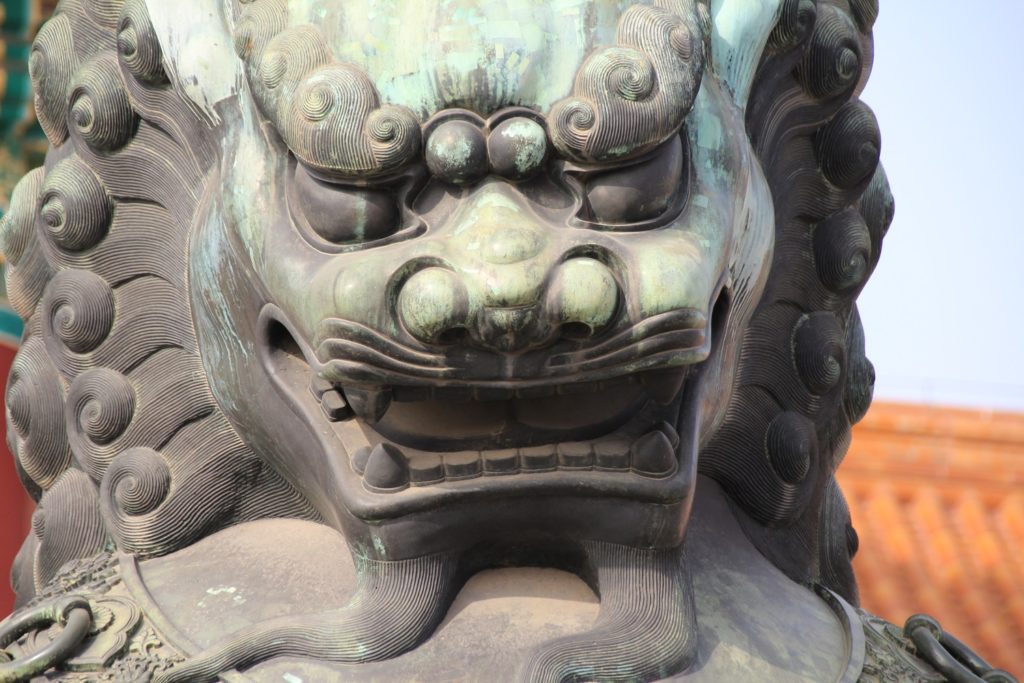After sleeping through three alarm clocks in the morning and turning up late for breakfast, we left in our own personal bus with our own personal government supervisor – sorry, our own personal tour guide, to visit some typical tourist destinations on day three of the China exchange program. Our first target was the “temple of heaven and earth” (or something like that). On the way, we got to see how the normal citizen of Beijing lives – in huge, dirty apartment blocks that seem to be slowly falling apart, with very thin walls and windows. Compared to the European cities I have visited so far, the standard of living is very low. After all China was a third world country until not too long ago.
The temple is surrounded by a park, or, to be more correct, the park is actually a part of the temple. This is where retired citizens meet to do sports together or to play games. It is quite amazing how fit many of the senior residents that we met there are. In between the people, there are billboards on which the party presents the latest news to the readers. And there are always groups of people standing around the billboards, reading what the party has to say.
While we continued walking through the park, we also came across a group of people that, so our tour guide said, regularly meet here to sing patriotic songs.
I must, however, admit that the sense of community seems to be much stronger here in Beijing than it is back in Europe. As I mentioned above, complete strangers play games with each other, such as Chinese Chess, or groups of musicians form that play their instruments together. It is quite a nice sight.
The temple buildings themselves are also very nice and definitely worth visiting when in Beijing. The whole complex is very big, with a lot of the park in between the buildings. From our tour guide we learned that the square around the circular pagodas is always literally a square, because this symbolizes the earth, and that the building in the middle is always circular because it symbolizes heaven. The temple is very colorful and it is amazing how much detail there is on both the outside and the inside of the buildings.
But even in a temple, the Chinese security forces are always present – which is not a big surprise, considering that the country has nearly 20 secret police forces.
The next stop on our program was one that the politically interested in our group, especially me, were looking forward to a lot already: we were going to visit the place where, if you believe the government’s official story, in 1989 nothing happened, or, if you prefer the truth, the student protests originated that ended in the crackdown of the Chinese government on the students that killed thousands in Beijing. We’re talking about the Tiananmen square. On the way there, as always, there were countless red flags to take photos of.
Tiananmen is under very tight security. There are countless police and army officers, as well as a great lot of “voluntary helpers to keep up order in public” which you can recognize by the red armbands that they are wearing. And you should also know that there are many secret police officers in civil clothing throughout Beijing, and especially at the Tiananmen square as well. There are fences set up all around the square to be able to regulate the people, and there are mobile blockades next to the road to cut off traffic access if necessary. Before you are allowed to enter Tiananmen square, you have to go through a security check. And everywhere on the square itself and on the roofs of the neighboring buildings there are countless cameras to monitor every single of your moves. And Mao’s portrait watches over everything from the entrance gate to the forbidden city.
And the forbidden city is exactly where we went next, together with a lot of other people. Yet even here, there are still propaganda posters. It is interesting to note that most of the tourists in Beijing are actually Chinese, many of which are visiting their capital for the first time. There are only very few foreigners, and they are considered very interesting people. It is not uncommon for random Chinese people to take photos of you – or selfies with you. Anyway, the forbidden city is huge. It was the complex in which the Chinese emperor lived, which is why it was forbidden, and which is why it has so many very pretty gates that you have to pass through before reaching the city itself. The forbidden city also has a moat around it, and while the city was still forbidden, there were supposedly crocodiles there. It is very impressive to see such a huge, beautiful palace in the middle of today’s Beijing.
And that concludes day three of my visit to China.
